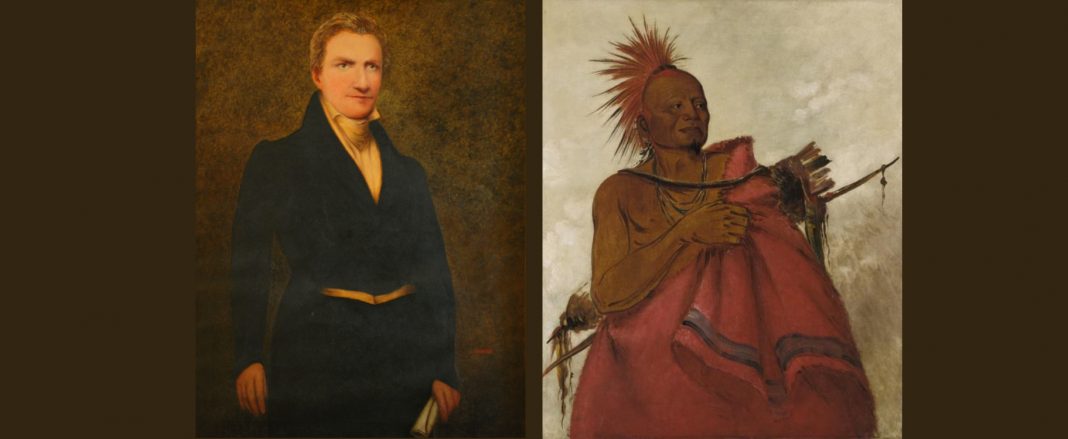One often touches history without realizing it. Recently, while hiking at Spadra Bluff near Clarksville, I ran across a historical marker designating the location of an Indian factory. What the heck? Looking it up lead to the discovery that Indian factories were set up by Thomas Jefferson as trade stores to induce the natives to dependency on modern trade goods and to get them “civilized.” The stores sold farm equipment and seed in addition to the usual Indian trade which included guns, powder, blankets, calico, mirrors, sugar, and spices. In return, the Indian would trade hides, wild honey, bear bacon, and buffalo meat to the trader. The hides were doused in turpentine and the food preserved and then shipped to the New Orleans market.
The Spadra factory was established in 1819, primarily to trade with the many Cherokee who had settled along the Arkansas River from Conway into Fort Smith. Hunting and trading hides was the primary means of income for Indian tribes and, the increasing numbers of natives moving in from the east caused conflict between the Cherokee and the Osage who were native to the region.
Spadra carried out a thriving business under director Matthew Lyon, catering to the local Cherokee trade from 1819-22. Being seen as a friend to the Cherokee was not always a positive thing. The Osage were determined that no one was going to take their hunting grounds and that the soldiers in Fort Smith were not going to prevent them from fighting. Hundreds of Osage, led by Chief Mad Buffalo, threatened to overrun Fort Smith and its small contingent of men, that is until the commander rolled out his six-pound cannons full of canister and threatened to open fire. Circling the fort, they began to raid the Cherokee villages along the Arkansas River. Lyon was informed that over 800 Osage were on the way to Spadra. Alarmed, he removed 113 kegs of gunpowder, fifty rifles, and other goods and headed downriver. The raid eventually ground to a halt and things returned to normal.
The Indian Factory closed and moved west in 1822 but that was not the end of historic Spadra. Located on the Arkansas River, both it and Morrison Bluff were prime stops on the steamboat lines running into Oklahoma. It was the first county seat for Johnson County and a prime port for the region. As such, it is presumed that visitors as famous as Jim Bowie, Sam Houston, John Drennan, Zachary Taylor, Jefferson Davis, and others walked the main streets and perhaps spent the night there or at New Spadra, located just across Spadra Creek. In 1832, Washington Irving and perhaps artist George Catlin stopped along the bluff; they certainly traveled west along the Arkansas River.
After the Civil War, controversy ensued between the northern and southern regions of extensive Johnson county which, at that time extended south of the Arkansas River. Spadra once again sought to become the county seat, only to be excluded when an agreement was reached to form a new county south of the river and leave Clarksville as the county seat.
Today, one can walk along the bluff above the Arkansas River and enjoy the sound of the geese and see the beauty of the surrounding countryside. Little is left to remind us of the rich history and heritage of our past.






